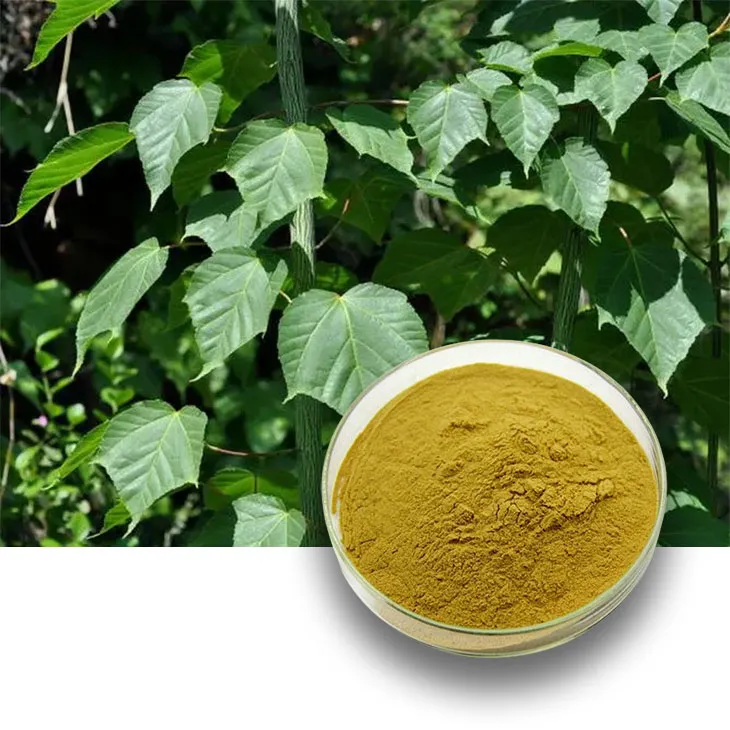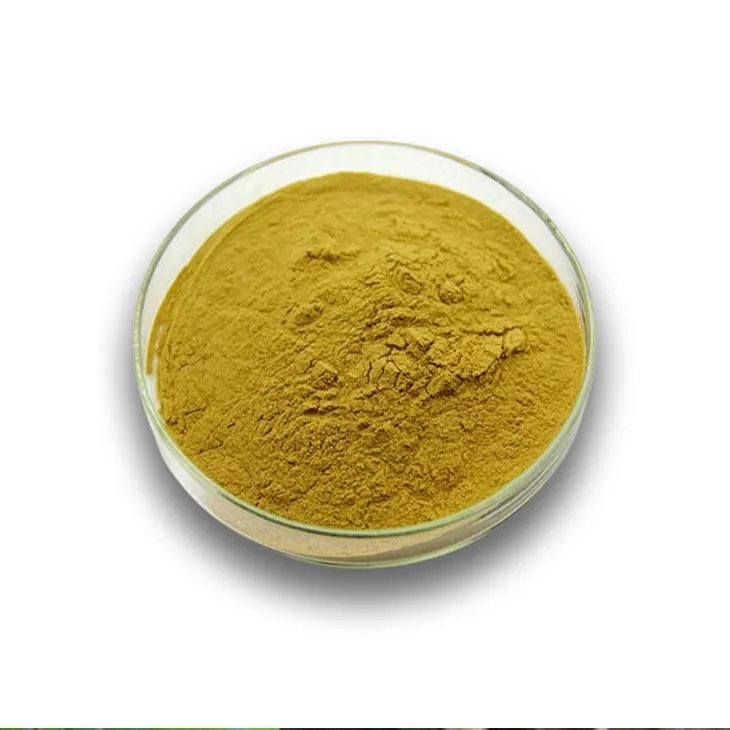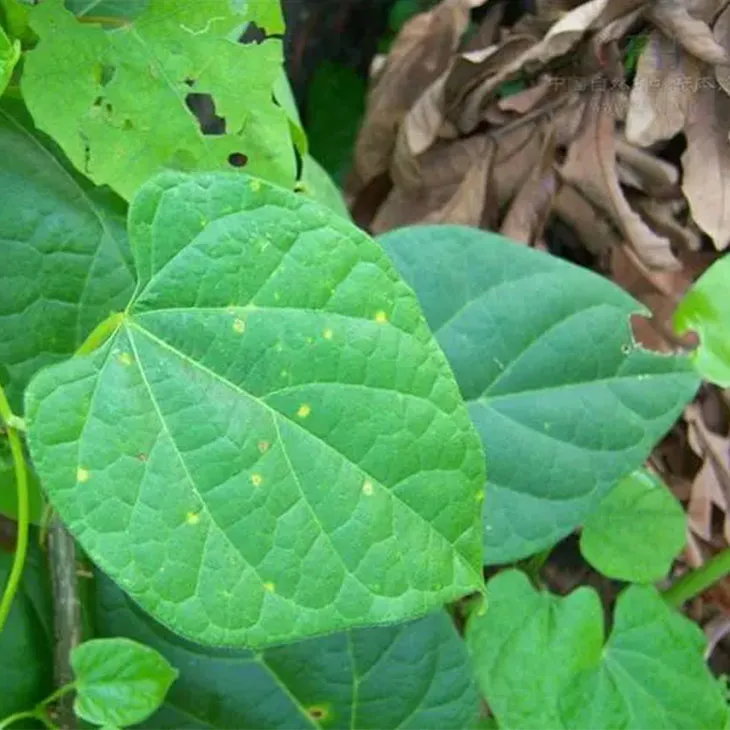- 0086-571-85302990
- sales@greenskybio.com
Optimal Bioavailability of Tinospora cordifolia Extracts.
2024-11-29

1. Introduction
Tinospora cordifolia, a plant with a long history in traditional medicine, has been the focus of numerous studies due to its potential therapeutic properties. The bioavailability of its extracts plays a crucial role in determining its effectiveness in medical applications. Bioavailability refers to the rate and extent to which a substance (in this case, the Tinospora cordifolia extract) is absorbed and becomes available at the site of action. Understanding the factors that influence the optimum bioavailability of this extract is essential for harnessing its full potential in medicine.

2. Pharmacognosy of Tinospora cordifolia
2.1 Different Plant Parts for Extraction
The various parts of Tinospora cordifolia, such as the stem, leaves, and roots, are used for extraction. The stem, in particular, is a commonly used part. It contains a rich array of bioactive components. The stem extract may possess different properties compared to extracts from other parts. For example, the concentration of certain alkaloids might be higher in the stem extract.
2.2 Bioactive Components
Tinospora cordifolia is known to contain several bioactive components. These include alkaloids, diterpenoids, glycosides, and polysaccharides. Alkaloids like berberine and palmatine are some of the important constituents. They are believed to contribute to the plant's pharmacological activities, such as antioxidant, anti - inflammatory, and immunomodulatory effects. Diterpenoids also play a significant role in the plant's medicinal properties. The presence of these diverse bioactive components makes the study of the extract's bioavailability complex yet interesting.

3. Relationship between Bioavailability and Pharmacokinetics
3.1 Absorption
The absorption of Tinospora cordifolia extract is a crucial step in determining its bioavailability. The bioactive components need to cross the biological membranes to enter the bloodstream. Factors such as the form of the extract (e.g., powder, tincture, or capsule), the presence of other substances that may enhance or inhibit absorption, and the physiological state of the gastrointestinal tract can influence absorption. For instance, the presence of certain lipids in the diet may increase the absorption of lipophilic components in the extract.
3.2 Distribution
Once absorbed, the components of the Tinospora cordifolia extract are distributed throughout the body. The distribution pattern depends on factors like the lipophilicity or hydrophilicity of the components. Lipophilic components may tend to accumulate in adipose tissues, while hydrophilic components may be more evenly distributed in the aqueous compartments of the body. The blood - brain barrier can also affect the distribution of the extract's components, as it restricts the entry of certain substances into the brain.
3.3 Metabolism
The metabolism of the extract in the body is another important aspect of pharmacokinetics. Enzymatic reactions in the liver and other tissues can modify the bioactive components. For example, cytochrome P450 enzymes may play a role in metabolizing the alkaloids present in the extract. The metabolites formed may have different pharmacological activities compared to the parent compounds. Some metabolites may be more active, while others may be less active or even inactive.
3.4 Excretion
Excretion is the final step in the pharmacokinetic process. The components of the Tinospora cordifolia extract and their metabolites are excreted from the body through various routes, such as the kidneys (urinary excretion) and the liver (biliary excretion). The rate of excretion can affect the overall bioavailability of the extract. If the components are excreted too quickly, their effectiveness may be reduced.

4. Impact of Demographic Factors on Bioavailability
4.1 Diet
Diet can have a significant impact on the bioavailability of Tinospora cordifolia extract. A diet rich in certain nutrients can either enhance or inhibit the absorption of the extract's components. For example, a high - fiber diet may slow down the absorption process as it can bind to the components in the gut. On the other hand, a diet containing certain fats may increase the absorption of lipophilic components. Additionally, the presence of other herbal supplements or medications in the diet may interact with the extract, affecting its bioavailability.
4.2 Age
Age is another factor that influences bioavailability. In general, the physiological functions of the body, such as the function of the digestive system and the activity of drug - metabolizing enzymes, change with age. Elderly individuals may have a reduced ability to absorb and metabolize the components of the Tinospora cordifolia extract. Younger individuals may have a more efficient absorption and metabolism process, but they may also be more sensitive to potential side effects due to their different physiological states.
4.3 Gender
Gender differences can also affect the bioavailability of the extract. Hormonal differences between males and females can influence the pharmacokinetics of the extract. For example, the activity of certain drug - metabolizing enzymes may be different in males and females. Additionally, differences in body composition, such as the proportion of adipose tissue, can affect the distribution of the extract's components.

5. Current Research on Enhancing Bioavailability
5.1 Phytochemical Modification
One approach to enhancing the bioavailability of Tinospora cordifolia extract is through phytochemical modification. This involves altering the chemical structure of the bioactive components in the extract. For example, chemical derivatization of alkaloids may improve their solubility and, consequently, their absorption. However, this approach requires careful consideration as any modification may also change the pharmacological properties of the components.
5.2 Combination Therapies
Combination therapies are another area of research for enhancing bioavailability. Combining Tinospora cordifolia extract with other substances that can enhance absorption or modify pharmacokinetics is being explored. For instance, combining the extract with certain lipids or surfactants may improve the absorption of its lipophilic components. Additionally, combining the extract with other herbs or drugs that have complementary pharmacological activities may enhance its overall therapeutic effect.
6. Conclusion
The optimum bioavailability of Tinospora cordifolia extract is a complex and multifaceted topic. Understanding the pharmacognosy of the plant, the relationship between bioavailability and pharmacokinetics, and the impact of demographic factors is crucial for maximizing its effectiveness in medicine. Current research on enhancing bioavailability through phytochemical modification and combination therapies shows promise but also requires further investigation. Future studies should focus on a more in - depth understanding of these aspects to ensure the most effective use of Tinospora cordifolia extract in the treatment of various diseases.
FAQ:
1. What are the main bioactive components in different parts of Tinospora cordifolia used for extraction?
Tinospora cordifolia contains various bioactive components in different parts. For example, the stem may contain alkaloids, diterpenoid lactones, and glycosides. These components contribute to its potential medicinal properties. However, the specific composition can vary depending on factors such as the plant's growth environment and extraction methods.
2. How does the pharmacokinetics of Tinospora cordifolia extract affect its bioavailability?
The pharmacokinetics, including absorption, distribution, metabolism, and excretion, play crucial roles in bioavailability. Absorption determines how much of the extract enters the bloodstream. Distribution is about where the components spread in the body. Metabolism can modify the components, which may either enhance or reduce their activity. Excretion affects the duration of action. For Tinospora cordifolia extract, factors like its chemical nature and solubility influence these pharmacokinetic processes and thus its bioavailability.
3. In what ways does diet impact the bioavailability of Tinospora cordifolia extract?
Diet can have both positive and negative impacts on the bioavailability of Tinospora cordifolia extract. Some dietary components may interact with the extract's bioactive compounds. For instance, certain foods high in fiber might slow down absorption. On the other hand, some nutrients in the diet could potentially enhance the solubility or stability of the extract components, thereby increasing bioavailability. However, more research is needed to fully understand these complex interactions.
4. Are there differences in the bioavailability of Tinospora cordifolia extract between different genders?
Yes, there may be differences in the bioavailability of Tinospora cordifolia extract between genders. Hormonal differences, body composition, and metabolic rates can vary between males and females. These factors can influence how the body absorbs, distributes, metabolizes, and excretes the extract. For example, hormonal fluctuations in females may affect the metabolism of certain components in the extract, leading to different bioavailability compared to males.
5. What are the current methods for enhancing the bioavailability of Tinospora cordifolia extract?
Current methods for enhancing the bioavailability include phytochemical modification and combination therapies. Phytochemical modification can change the chemical structure of the bioactive components to improve their solubility or stability. Combination therapies involve using the extract in combination with other substances that may enhance its absorption or effectiveness. However, these methods are still under research, and more studies are required to optimize and ensure their safety and efficacy.
Related literature
- Bioavailability Enhancement of Herbal Extracts: A Case Study of Tinospora cordifolia"
- "Pharmacokinetic and Bioavailability Studies of Tinospora cordifolia Extracts in Different Age Groups"
- "The Impact of Phytochemical Modifications on Tinospora cordifolia Extract Bioavailability"
- ▶ Hesperidin
- ▶ citrus bioflavonoids
- ▶ plant extract
- ▶ lycopene
- ▶ Diosmin
- ▶ Grape seed extract
- ▶ Sea buckthorn Juice Powder
- ▶ Beetroot powder
- ▶ Hops Extract
- ▶ Artichoke Extract
- ▶ Reishi mushroom extract
- ▶ Astaxanthin
- ▶ Green Tea Extract
- ▶ Curcumin Extract
- ▶ Horse Chestnut Extract
- ▶ Other Problems
- ▶ Boswellia Serrata Extract
- ▶ Resveratrol Extract
- ▶ Marigold Extract
- ▶ Grape Leaf Extract
- ▶ blog3
- ▶ blog4
-
Garcinia Cambogia Extract
2024-11-29
-
Nettle leaf extract
2024-11-29
-
Feverfew Extract
2024-11-29
-
Artichoke Leaf Extract
2024-11-29
-
Panax Ginseng Leaf Extract
2024-11-29
-
White Willow Bark Extract
2024-11-29
-
Uridine-5'-monophosphate Disodium salt
2024-11-29
-
Lily extract
2024-11-29
-
Sea buckthorn Juice Powder
2024-11-29
-
Scutellaria Extract
2024-11-29





















